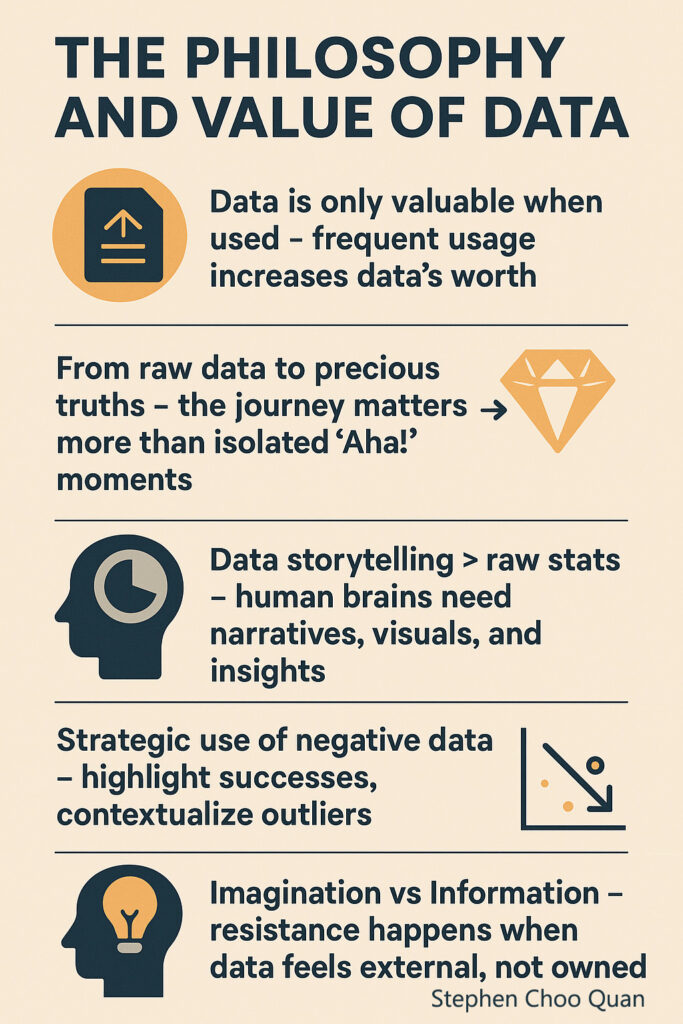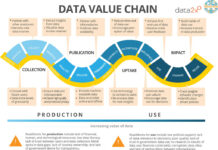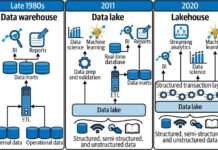All Data Strategies should coherently connect fundamental truths (capabilities) to maximize the probability of a desired winning outcome. Let us cover some of the leading indicators of the Mean Time to Act on Insight (MTTAI)
“The key lies not in having better information, but in transforming that information into insights that cannot be ignored.”
Jim Collins
Data is everywhere, but its actual value emerges only when it’s used. Like books gathering dust on a shelf, unused data is just potential. It’s through frequent, purposeful use that data becomes an asset. The more often teams refer to, question, and build on data, the more valuable it becomes, not just in insights, but in shaping decisions and culture.
The journey from raw data to actionable truth is rarely a straight line. We often glorify the “Aha!” moment, but in reality, the context, iterations, and quiet patterns reveal the deepest truths. Data isn’t just about answers, it’s about asking the right questions, again and again.
That’s why data storytelling is more powerful than raw stats. Humans aren’t wired to absorb tables or dashboards in isolation. We understand stories. When data is wrapped in a narrative, supported by visuals, and tailored to a real-world scenario, it makes people feel, moves people, informs, and persuades. Stories that resonate make people act, not the data itself.
Even “negative” data has strategic value. This is the equivalent of a pause in speaking. This negative space gives humans room to digest and feel. Failure data, outliers, or anomalies have the same effect. When framed well, it can show what’s working, what’s not, and how resilient a system is. It can turn uncertainty into insight and highlight success by contrast.
Ultimately, data is about people, and people resist what they don’t feel ownership of. If data feels external, like it belongs to “someone else,” it becomes a burden. But when teams are involved in shaping, questioning, and co-creating with data, it becomes part of their story, not just information but imagination.
Data Strategies should do two things well:
- Make the data easy to collect for analysis (engineering)
- Ensure the data collected can create a narrative (analyst) that people will act on. These insights will ensure people do what needs to be done, when it needs to be done, do the best they can, and do it that way every time they get that insight.
Many Data Strategies fail as engineering basks in the beautiful design and build of data collection, while the organization is left holding the bag for unrealized dreams. Time, effort, and resources were all spent without a winning outcome due to the lack of linkage between collection and usage. The lack of coherence makes this more of a tactical plan than a strategy.
Summary:
- Data is only valuable when used: frequent usage increases data’s worth.
- From raw data to precious truths: the journey matters more than isolated “Aha!” moments.
- Data storytelling > raw stats: human brains need narratives, visuals, and insights to act.
- Strategic use of negative data: highlight successes, contextualize outliers.
- Imagination vs. Information: Resistance happens when data feels external, not owned.
- Actionable data is consistent in collection and causes people to take the best actions every time.
- Strategies need coherence. Plans defined as a sequence of actions do not mandate that the steps be coherent. A strategy can be decomposed into an executable plan.












